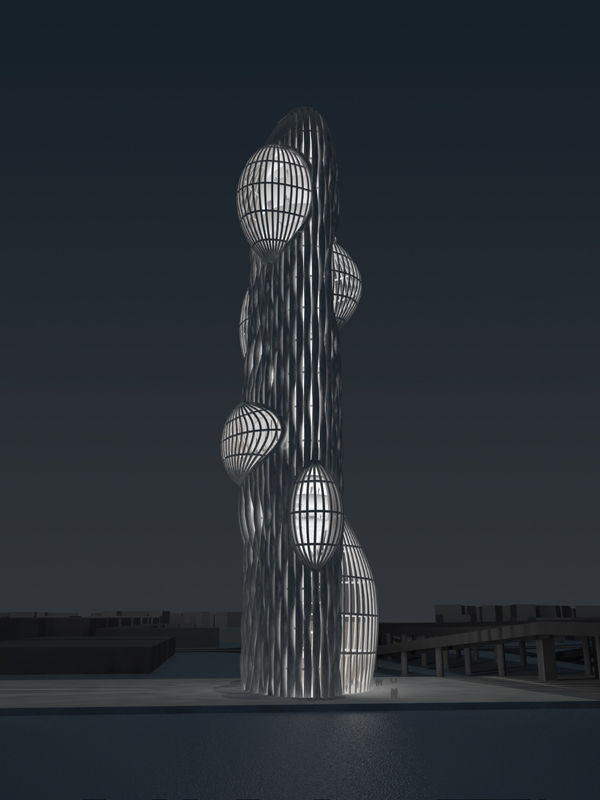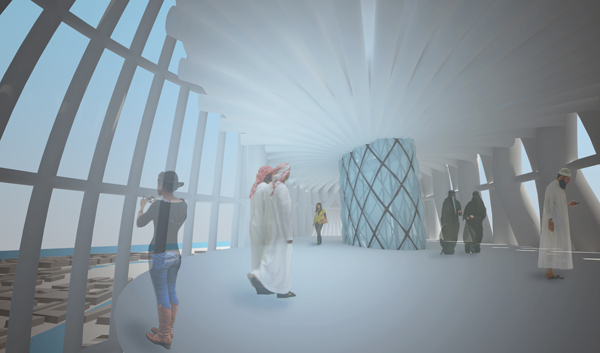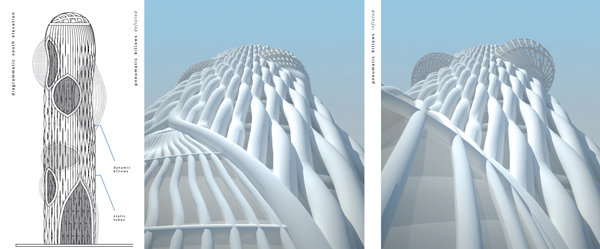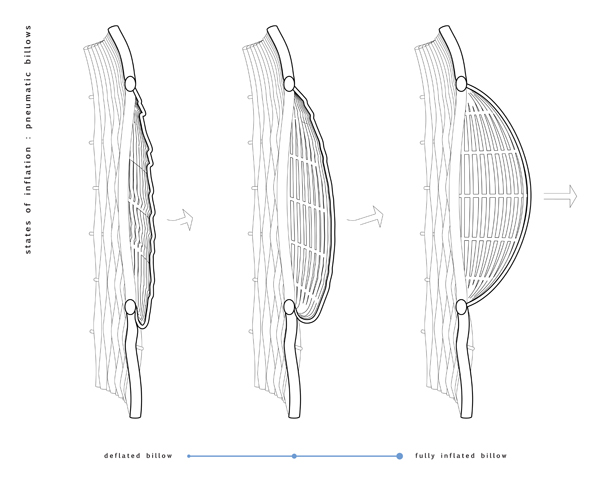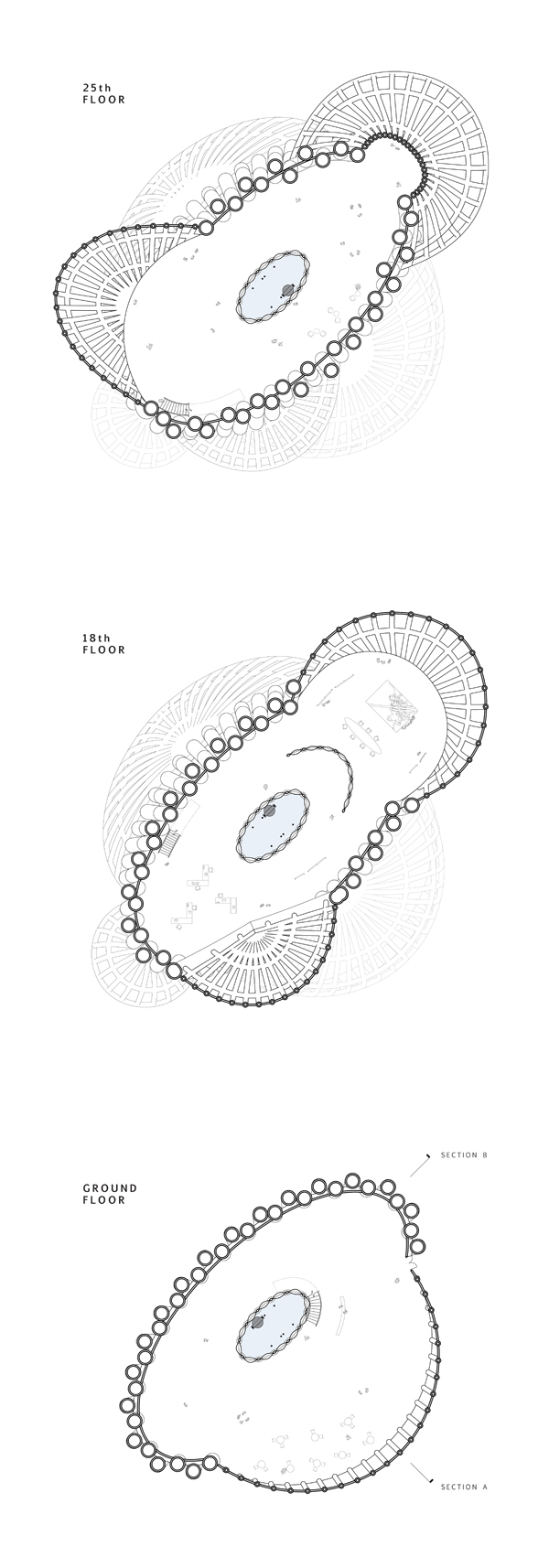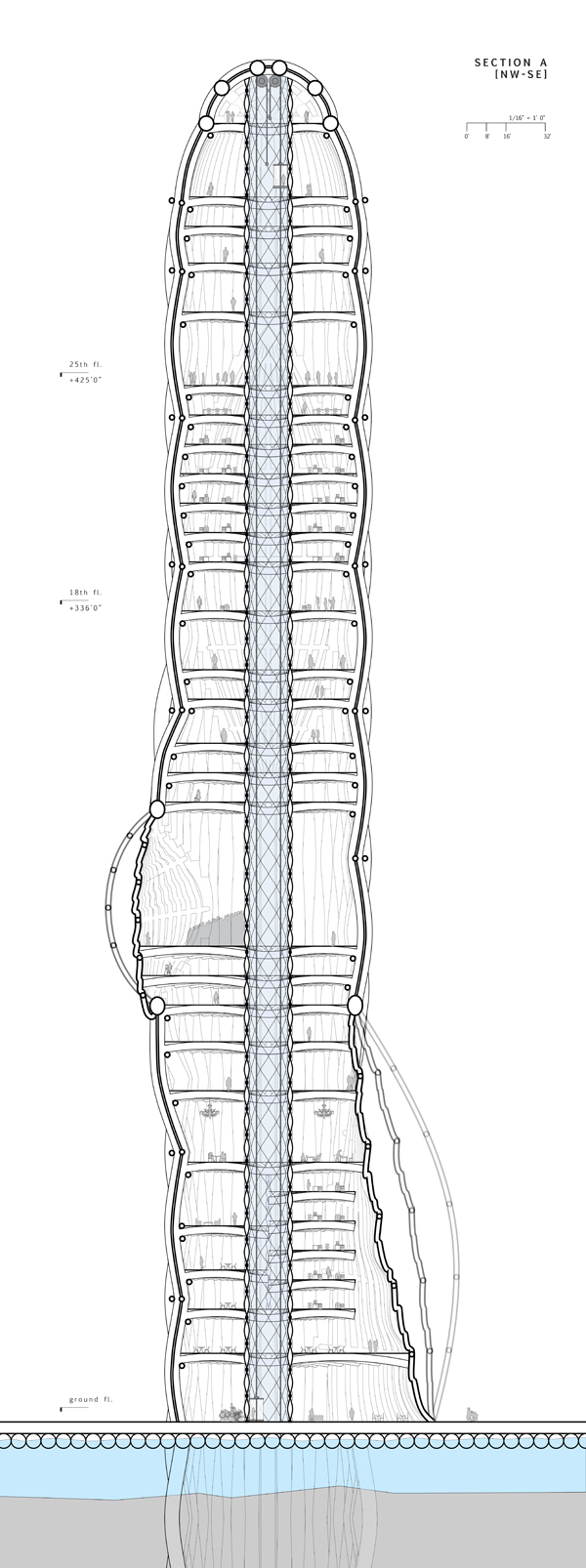In an attempt to both reference and reflect the changing landscape of Abu Dhabi, Becky Lam has designed a pneumatic tower to act as a gateway for the Saadiyat Island development that is currently under construction. In designing a skyscraper as a “gateway” for the new development, some of the biggest questions lie in the iconography of the building – what it symbolizes and what it represents. With the site currently devoid of a cohesive urban fabric, the proposal argues that Saadiyat Island lacks a legible architectural identity. Thus, Inflation is a temporary gateway that welcomes visitors to the changing landscape of the island while urban development is still under way. Creating a spectacle, this inflated skyscraper serves as an innovative pneumatic feat, accomplishing its role as a gateway by drawing even more attention to both Saadiyat and Abu Dhabi. Through its changing states of inflation and inherent impermanence, it acts as an icon that acknowledges the fleeting urban identities of today’s cities. Its façade is comprised of static, six-foot diameter pneumatic tubes punctuated with a series of dynamic billows that inflate and deflate based on occupancy. Together with a pillow-like core and a system of pneumatic beams that carry each floor plate, Inflation seeks to challenge the conventions of permanence and architectural hardscapes.
Inflation was designed as part of the advanced Exotic Variables and States of Change studio led by Thom Faulders at the California College of the Arts. The challenge presented to the students was to examine emerging pattern models that would allow for growth and adaptive response, enabling them to explore process-driven territories and architectures of exaggeration. This approach allowed for an extension to current practices of environmental engagement to include exotic possibilities and novel formations, gained through artful entanglement and irregular conditions – pushing beyond simplistic notions of functionalism and economy.

